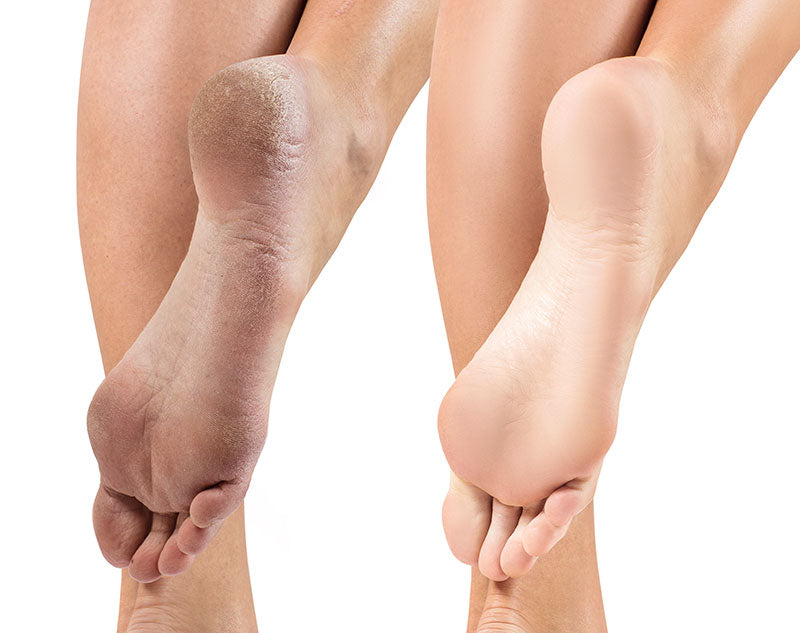
Calluses On Feet
Share
What are calluses?
Most of us are familiar with calluses. They can form most anywhere of the body but are often found on the bottoms of feet. They feel like thick, rough skin and, though some people don’t really mind them, others would rather they went away. They are, in fact, made of thick skin that forms when the body tries to protect itself from repeated pressures or superficial injuries to the foot’s skin. They tend to be more common in older populations but they are a generally common problem for people of all ages. In fact, up to 20% of people have calluses on their feet.

What causes foot calluses?
Although most calluses are formed when there is repeated pressure or trauma on the feet such as walking around barefoot, wearing ill-fitting shoes, or wearing your shoes without socks, there can be some more serious conditions associated with foot calluses. Perhaps the major pathology most associated with calluses on the feet is diabetes. Having a callus on your foot without experiencing any other symptoms of diabetes is not much cause for alarm though. Typically the foot has already been impacted by diabetes in other ways, such as diabetic neuropathy, when the callus forms.

Treating Calluses
Calluses fall into that strange gray area occupied by both the medical and the beauty industry. Because they are often perceived as unsightly, there are many cosmetic products out there to treat them, and not all of these products have been reviewed with the scrutiny of a medical product. The variety of creams, herbal wraps, and scraping devices for sale is huge and they all generally promise to do the same thing: remove the callused skin in one treatment. And while moisturizing your skin and removing the dead skin cells won’t necessarily hurt you, it might not really get to the root of the problem.
If you have a callus, it formed for a reason. Something was irritating the skin on your foot. This may have come as a result of shoes that don’t fit well, a habit of walking barefoot, or because you have another condition such as a bunion that causes your foot to rub against the inside of your shoe in the same spot all the time. So even if you find an amazing product that removes the callus for you, if you continue to participate in whatever behavior caused the callus in the first place, it is likely to come right back.
If the callus was caused by poor-fitting shoes or as a result of other conditions like bunions or hammer toes, adding a shoe insert to correct the fit of your shoe or your foot’s posture may help. It’s also important to wear shoes that fit well, as in not squeezing your feet into heels that are a half-size too small or wearing a size up that slips around over your heel all day. In rare cases, if the callus is bothersome, cracked, or painful and it doesn’t seem to resolve, a visit to the doctor may help. They can examine the problem, help identify the cause, prescribe medicated cream or even suggest an office removal treatment.
The bottom line is that calluses are not an emergency, but some people are bothered by them. There are a lot of treatments out there but the best treatment is preventative. Wear shoes that fit well and treat your feet kindly.